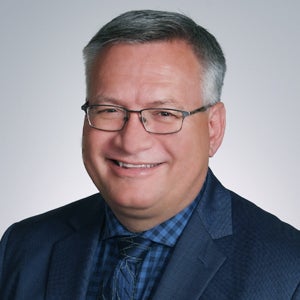
Strategies for Effective Contingent Nurse Workforce Management
AHA Knowledge Exchange
Building a healthier teamwork environment
To offset the ongoing clinician shortage, hospital and health system leaders will leverage both permanent and temporary nurses to improve access to care, patient safety and care quality. Contingent nurses share the same credentials, experiences and goals of delivering the best care possible to patients and communities. At the same time, the time-limited nature of their work means that nursing and hospital leaders work through unique considerations in ensuring successful collaboration and integration of contingent staff with employed staff. This executive dialogue explores how hospital leaders are changing the culture of how contingent nurse staff are received and integrated into teams in a supportive environment to ensure the continuity of high-quality patient care and the efficient and effective delivery of service to their communities.
7 success strategies for contingent nurse workforce planning and integration
- Utilize agency staffing to avoid burning out current staff, provide needed relief and support, and accommodate work-life balance. Fill and augment specialized care gaps.
- Pinpoint where contingent staff labor expense and expertise can be utilized to enhance capacity and access to care and patient safety and quality.
- Communicate to staff and leadership how contingent workforce supports workforce planning needs.
- Create a culture of inclusion for contingent nurses with a warm welcome and introduction to the team, onboarding and orientation to the culture and expectations, and assign a go-to point person.
- Figure out the skills and strengths of your agency nurses so that they can bring those skills and strengths to their work unit.
- Use a systems approach and consider a mix of external contingent nurses and an internal program of travel nurses throughout the health system.
- Assess your available permanent workforce, the workload that they’re able to do, and then engage staffing agencies to help figure out a proactive, sustainable, contingent nurse workforce plan and budget.
Participants

Winnie Adams, R.N., BSN, MSN, MBA
Chief Nursing Officer
Astria Sunnyside Hospital

Al Campbell, R.N., MBA, FACHE
President
Beth Israel Lahey Health Winchester Hospital

Ann Marie Clevenger, DNP, R.N., NEA-BC
Chief Nursing Officer
Memorial Hospital of Sweetwater County

Robin Geiger, DNP, FNP-BC,
NEA-BC
Senior Vice President, Clinician Advocacy
Ingenovis Health

Leeann Kaminsky, MHRM
Vice President and Chief Human Resources Officer
WVU Medicine

Susie Krug, R.N., MHA, BSN, CENP
Senior Vice President and Chief Nursing Executive
Saint Luke’s Health System

Pat Patton, DNP, MSN, R.N., NEA-BC
Chief Nursing Officer
Providence Swedish Medical Center–First Hill Campus

Michelle Rainey, MSN, R.N., NE-BC
Senior Vice President/Chief Nursing Officer
Pikeville Medical Center

Kathleen Sanford, DBA, R.N., FACHE, FAAN
Executive Vice President, Chief Nursing Officer
CommonSpirit Health

Terry Siek, R.N., MSN
Chief Nursing Officer and Vice President for Patient Care
HaysMed

Shelley Wilson, R.N., MSN
Chief Nursing Officer
Henry Community Health

Moderator:
Robyn Begley, DNP, R.N., NEA-BC, FAAN
Senior Vice President and Chief Nursing Officer, American Hospital Association, and CEO, American Organization for Nursing Leadership
American Hospital Association
AHA Knowledge Exchange
Gain insights from the C-suite and health care leaders on the most pressing issues and transformational strategies.








